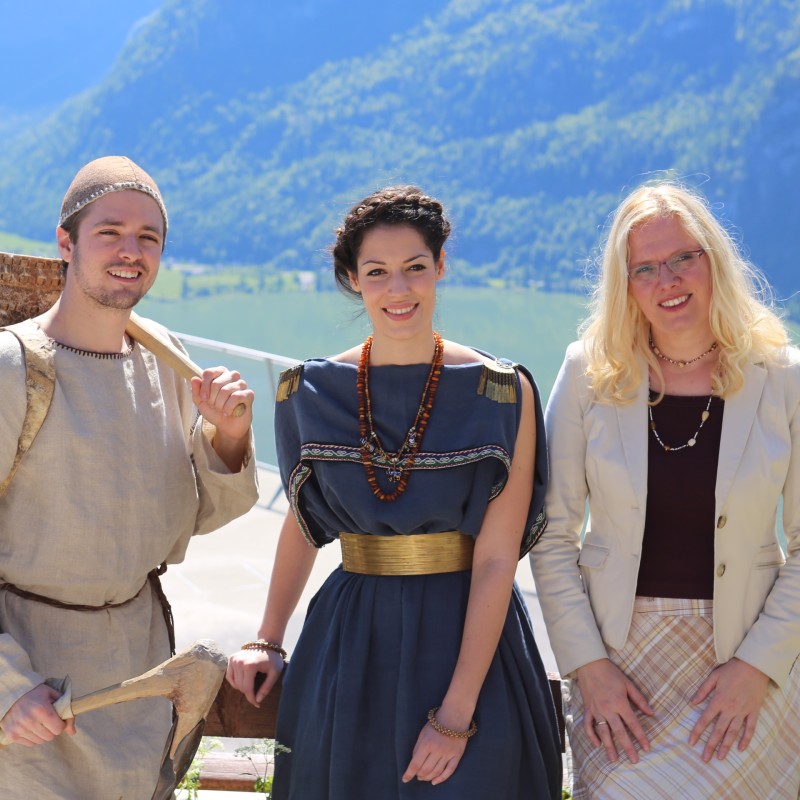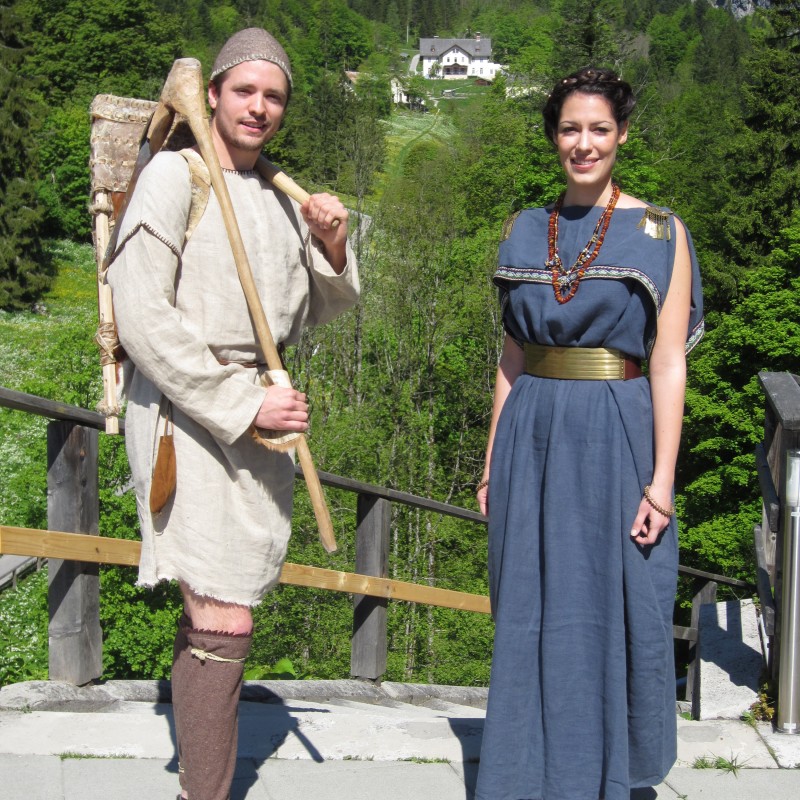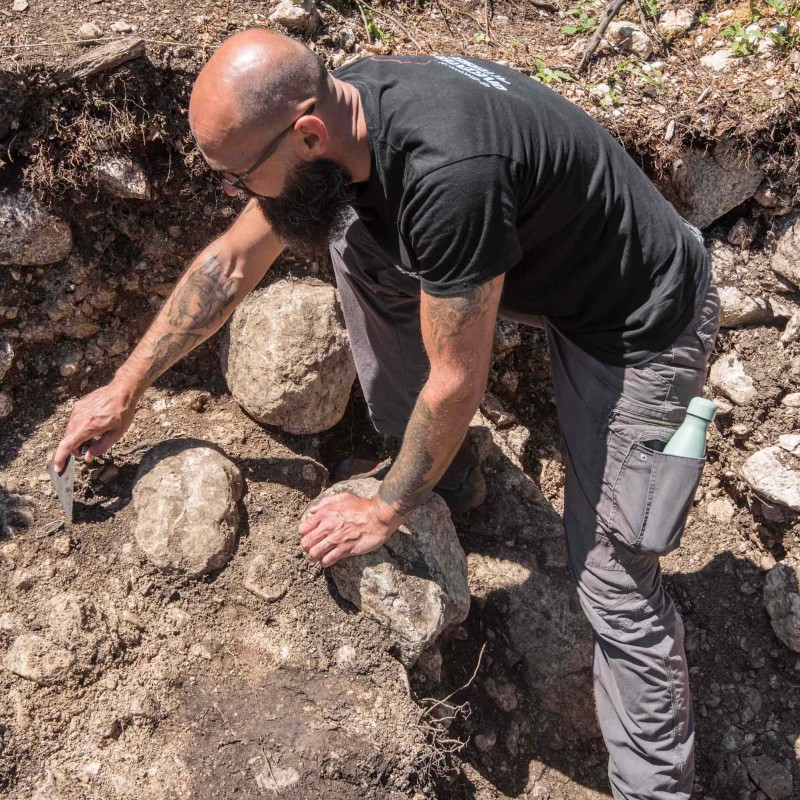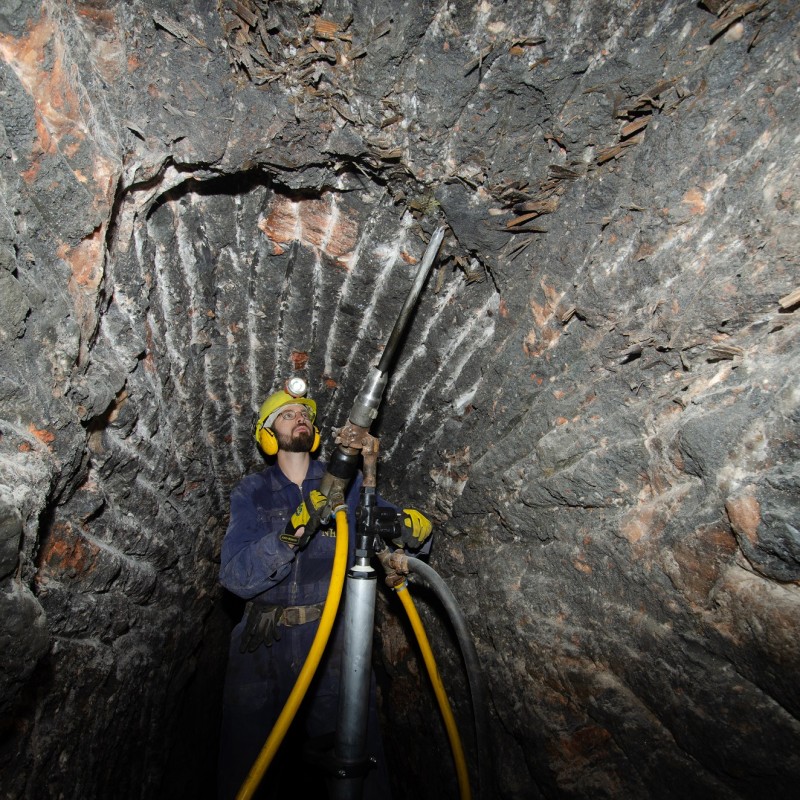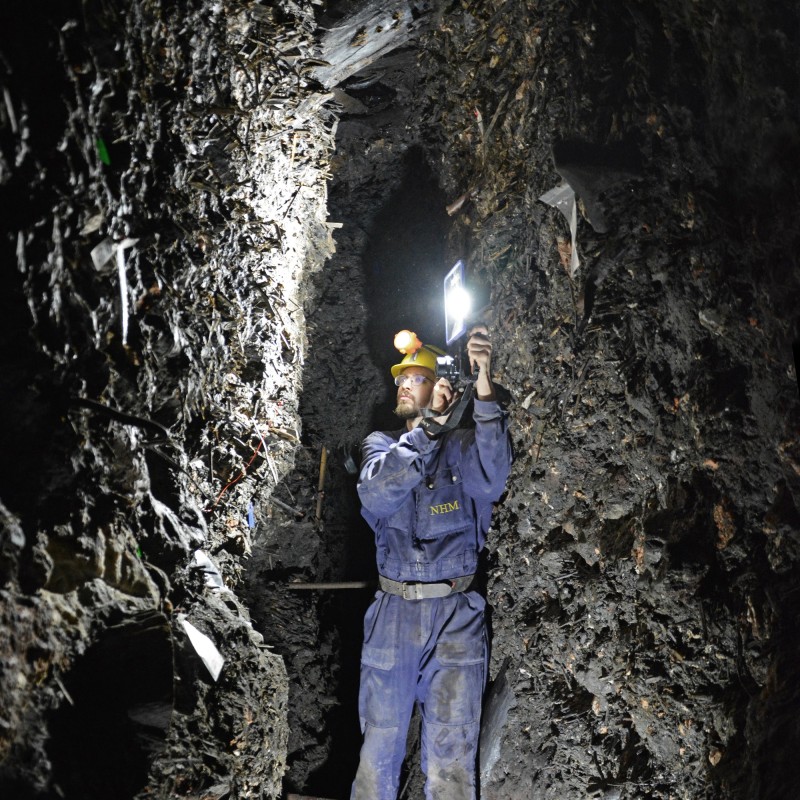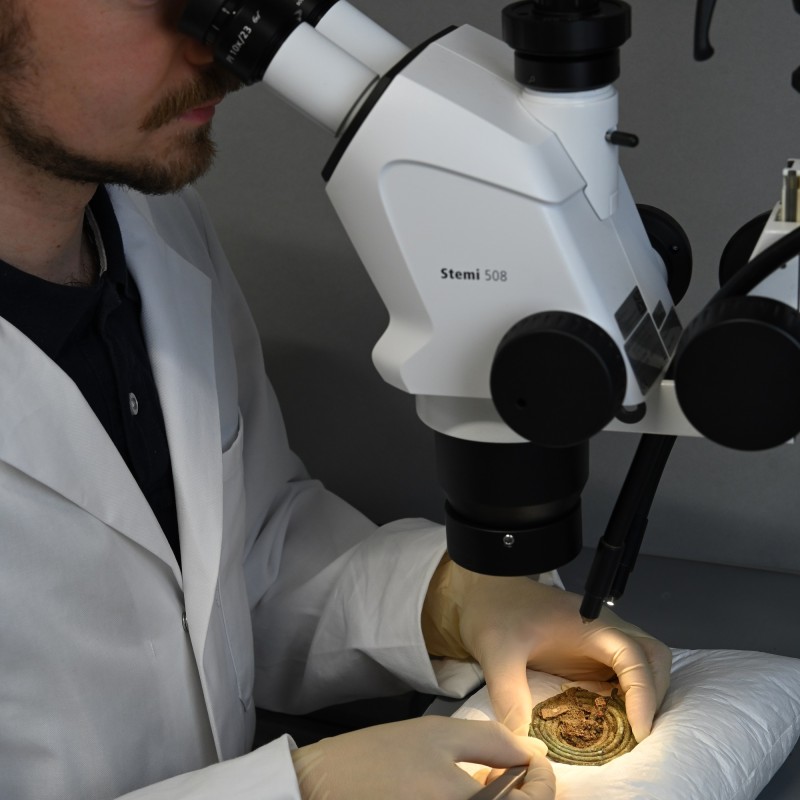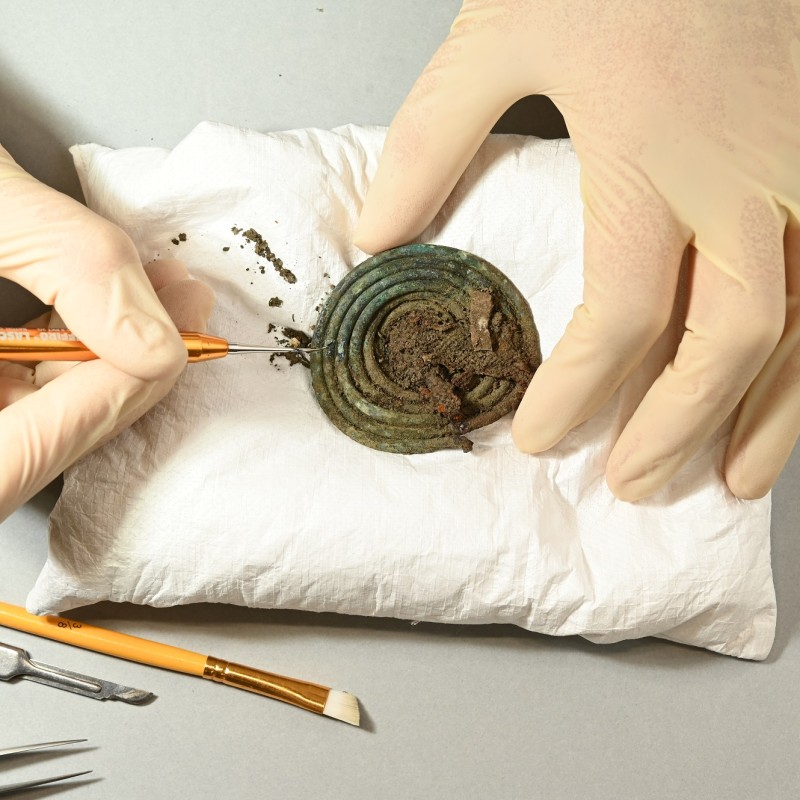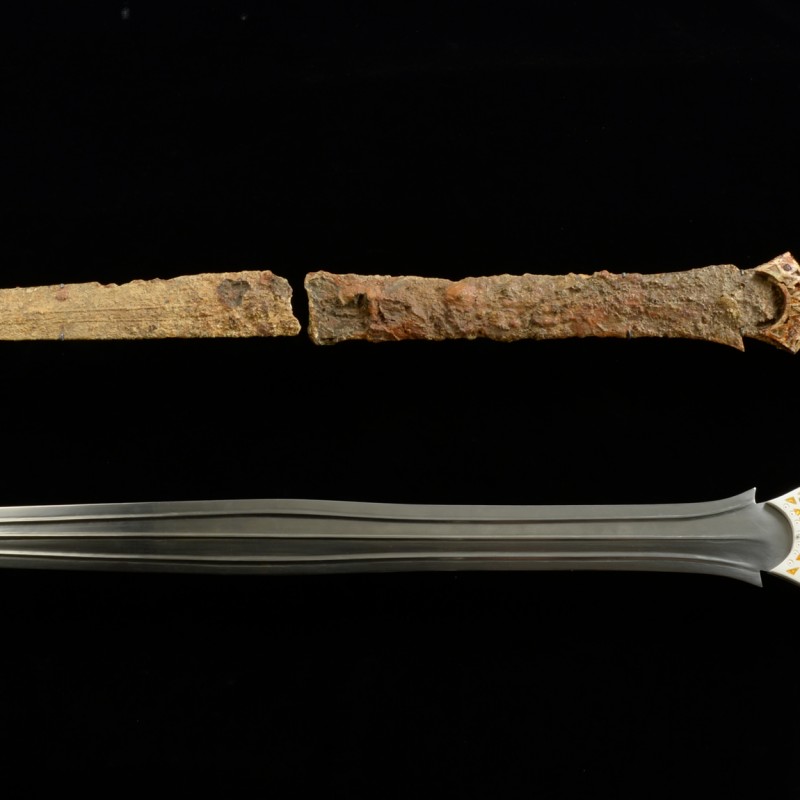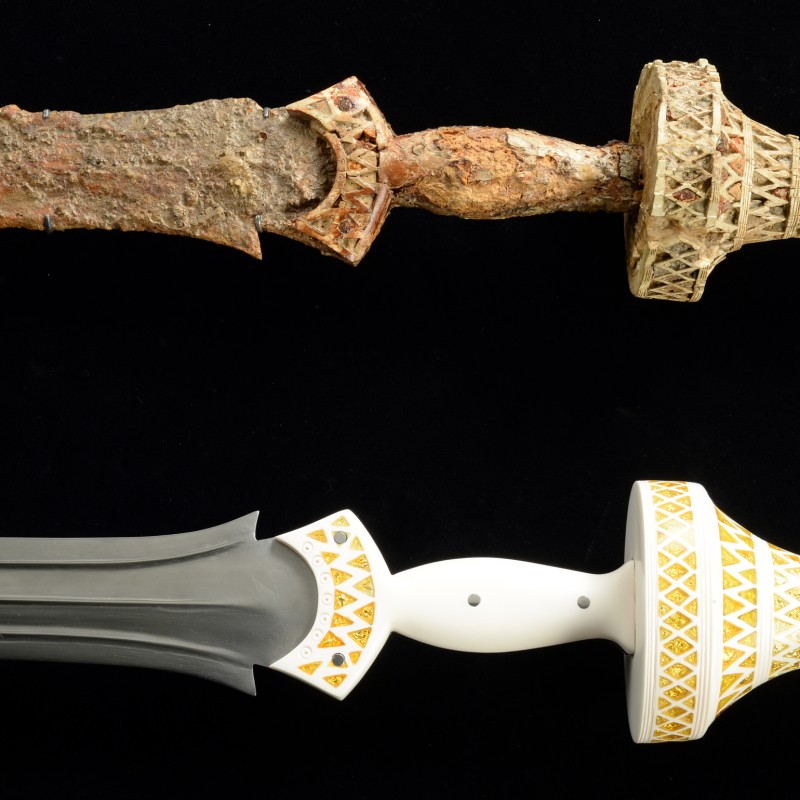Archaeology on the Mountain 2023: Research Past and Present
05. September 2023
The Natural History Museum Vienna and the Hallstatt Salzwelten are happy to announce the 2023 issue of their traditional “Archaeology
on the Mountain” event. On Saturday, 16 and Sunday, 17 September 2023, from 10:00 to 17:00, the public is invited to an open
day to learn about the world of prehistoric miners. The main theme of this year's event is “Research Past and Present”.
The discovery of a burial ground from the older Iron Age (approx. 800 to 450 BC) in 1846 made Hallstatt world-famous, and
the Hallstatt high valley has remained one of the most exciting excavation sites for archaeologists to this very day.
Around 800 BC, salt made Hallstatt the richest place in Central Europe. The extraordinary burial gifts found in the miners' graves are impressive evidence of these halcyon days. For their journey to the afterlife, the dead were equipped with amber, ivory and wine from the south. The unique finds from the mine and the burial ground secure Hallstatt the rank of a key site for understanding and studying our past, and they were a major factor in having it declared a UNESCO World Heritage Site.
In June, the NHM’s Department of Prehistory was proud to report a spectacular find: In an intact cremation grave, the researchers found a ribbed bronze bracelet, a bronze knife, an animal bone fragment that was a remnant of a food offering for the afterlife, as well as parts of spiral-shaped robe fibulae with textile residues. These residues were a particularly sensational find.
“This summer, we have gained numerous new insights,” explains Mag. Johann Rudorfer, research assistant at the Prehistory Department of the NHM Vienna and head of the archaeological surface excavations. “The pieces we found were deliberately broken or bent, lying on a compact heap of the cremated remains of human bones burnt on a funeral pyre. When the bronze artefacts were carefully detached from the ensemble, residues of what was presumably a container made of fabric were discovered on their underside.”
After having been professionally cleaned and restored at the NHM Vienna, the finds will be now presented to the public for the first time as one of the highlights at the “Archaeology on the Mountain”.
“With ‘Archaeology on the Mountain’ we aim to showcase the interdisciplinary research activities conducted in Hallstatt,” explains NHM Director General Dr. Katrin Vohland. “In line with this year’s theme 'Research Past and Present’, we will present fascinating information about excavation and documentation methods from the 1850s to the present day, both above and below ground.”
The brand-new findings will be presented at 15 stations:
The textile archaeologist and director of the Department of Prehistory, Priv. Doz. Dr. Karina Grömer, will shed light on how the fabric was manufactured under the microscope. She will also explain how the aspects we know about the appearance and fashion of prehistoric people has evolved since the beginning of Hallstatt research in the 1850s.
Staff members of the NHM Central Research Laboratories will explain in what ways the documentation and handling of finds has improved, and how old finds are re-evaluated with new research methods using scanning electron microscopy, X-ray fluorescence analysis and other state-of-the-art technologies.
Anthropologists from the NHM Vienna will explain how research on human bones has developed through DNA analysis.
The archaeological mining research unit of the NHM Vienna will show 3D visualisations of a site 250m underground to interested visitors. “The finds from the current excavations in the salt mining chambers that were mined during the Bronze and Iron Age give visitors a first-hand and up-close experience of prehistoric living and working environments,” explains Daniel Brander, research associate in the Department of Prehistory and head of excavations and research in the prehistoric salt mine. He invites visitors to try and “mine rock salt with a reconstructed Iron Age pickaxe or scoop salt from our salt pan.”
Archaeozoologists and archaeobotanists, who study the animal and plant remains found in the archaeological excavations, explain livestock husbandry and meat processing in the salt mine and investigate the diet of the prehistoric miners.
The Board of Trustees on Pile Dwellings will inform about a very active research field in the Salzkammergut lakes, namely underwater archaeology and its developments from its diverless beginnings up to modern-day methods.
Several impressive interactive stations invite visitors to experience how mobile people back then were, what routes they took, and how the salt deposits were discovered in the first place.
There will also be opportunity to watch restoration experts assemble old pottery shards into beautiful vessels. The replica of a famous Hallstatt sword with an ivory handle and shiny gold-coloured amber inlays is presented to the public for the first time side by side with the original. This sword from a rich man's grave of the 7th century BC represents one of the highlights in the display collection of the NHM's Department of Prehistory. This exceptional luxury item epitomises the far-reaching contacts of the Hallstatt elites.
The partners of the NHM Vienna at the Salzberg will also be present with stands:
The Torrent and Avalanche Control Authority will present its projects for the protection of the inhabitants of Hallstatt in the context of climate change, and the UNESCO World Heritage Region will be presented by its new World Heritage Manager, Bernd Paulowitz.
“Archaeology on the Mountain” is an event that invites active participation, hands-on experience and discovery. It is addressed to all interested people and caters especially to families.
Around 800 BC, salt made Hallstatt the richest place in Central Europe. The extraordinary burial gifts found in the miners' graves are impressive evidence of these halcyon days. For their journey to the afterlife, the dead were equipped with amber, ivory and wine from the south. The unique finds from the mine and the burial ground secure Hallstatt the rank of a key site for understanding and studying our past, and they were a major factor in having it declared a UNESCO World Heritage Site.
In June, the NHM’s Department of Prehistory was proud to report a spectacular find: In an intact cremation grave, the researchers found a ribbed bronze bracelet, a bronze knife, an animal bone fragment that was a remnant of a food offering for the afterlife, as well as parts of spiral-shaped robe fibulae with textile residues. These residues were a particularly sensational find.
“This summer, we have gained numerous new insights,” explains Mag. Johann Rudorfer, research assistant at the Prehistory Department of the NHM Vienna and head of the archaeological surface excavations. “The pieces we found were deliberately broken or bent, lying on a compact heap of the cremated remains of human bones burnt on a funeral pyre. When the bronze artefacts were carefully detached from the ensemble, residues of what was presumably a container made of fabric were discovered on their underside.”
After having been professionally cleaned and restored at the NHM Vienna, the finds will be now presented to the public for the first time as one of the highlights at the “Archaeology on the Mountain”.
“With ‘Archaeology on the Mountain’ we aim to showcase the interdisciplinary research activities conducted in Hallstatt,” explains NHM Director General Dr. Katrin Vohland. “In line with this year’s theme 'Research Past and Present’, we will present fascinating information about excavation and documentation methods from the 1850s to the present day, both above and below ground.”
The brand-new findings will be presented at 15 stations:
The textile archaeologist and director of the Department of Prehistory, Priv. Doz. Dr. Karina Grömer, will shed light on how the fabric was manufactured under the microscope. She will also explain how the aspects we know about the appearance and fashion of prehistoric people has evolved since the beginning of Hallstatt research in the 1850s.
Staff members of the NHM Central Research Laboratories will explain in what ways the documentation and handling of finds has improved, and how old finds are re-evaluated with new research methods using scanning electron microscopy, X-ray fluorescence analysis and other state-of-the-art technologies.
Anthropologists from the NHM Vienna will explain how research on human bones has developed through DNA analysis.
The archaeological mining research unit of the NHM Vienna will show 3D visualisations of a site 250m underground to interested visitors. “The finds from the current excavations in the salt mining chambers that were mined during the Bronze and Iron Age give visitors a first-hand and up-close experience of prehistoric living and working environments,” explains Daniel Brander, research associate in the Department of Prehistory and head of excavations and research in the prehistoric salt mine. He invites visitors to try and “mine rock salt with a reconstructed Iron Age pickaxe or scoop salt from our salt pan.”
Archaeozoologists and archaeobotanists, who study the animal and plant remains found in the archaeological excavations, explain livestock husbandry and meat processing in the salt mine and investigate the diet of the prehistoric miners.
The Board of Trustees on Pile Dwellings will inform about a very active research field in the Salzkammergut lakes, namely underwater archaeology and its developments from its diverless beginnings up to modern-day methods.
Several impressive interactive stations invite visitors to experience how mobile people back then were, what routes they took, and how the salt deposits were discovered in the first place.
There will also be opportunity to watch restoration experts assemble old pottery shards into beautiful vessels. The replica of a famous Hallstatt sword with an ivory handle and shiny gold-coloured amber inlays is presented to the public for the first time side by side with the original. This sword from a rich man's grave of the 7th century BC represents one of the highlights in the display collection of the NHM's Department of Prehistory. This exceptional luxury item epitomises the far-reaching contacts of the Hallstatt elites.
The partners of the NHM Vienna at the Salzberg will also be present with stands:
The Torrent and Avalanche Control Authority will present its projects for the protection of the inhabitants of Hallstatt in the context of climate change, and the UNESCO World Heritage Region will be presented by its new World Heritage Manager, Bernd Paulowitz.
“Archaeology on the Mountain” is an event that invites active participation, hands-on experience and discovery. It is addressed to all interested people and caters especially to families.
Director of the Prehistoric Department Priv. Doz. Dr. Karina Grömer and
a Hallstatt couple in reconstructed garments from the time between 1,500 and 500 B.C.
© NHM Wien, Hischam Momen
Hallstatt couple in reconstructed garments from the time between 1,500
and 500 B.C.
© NHM Wien, Irina
Kubadinow

